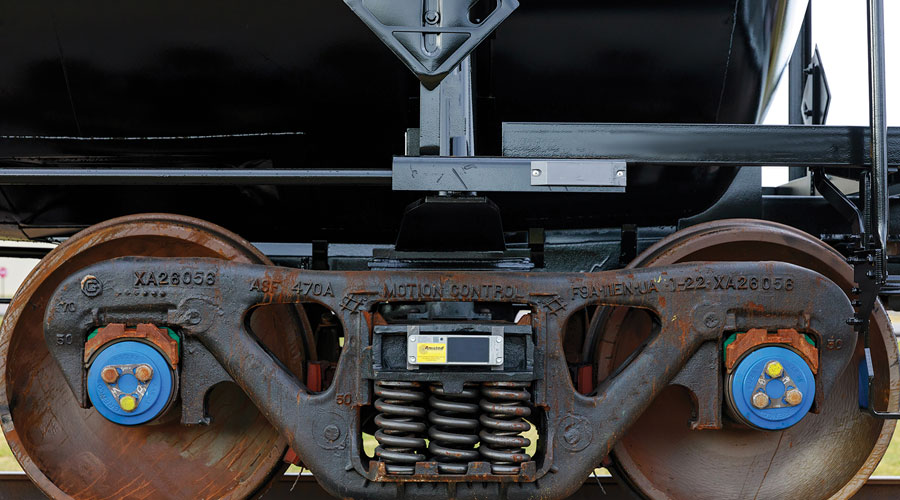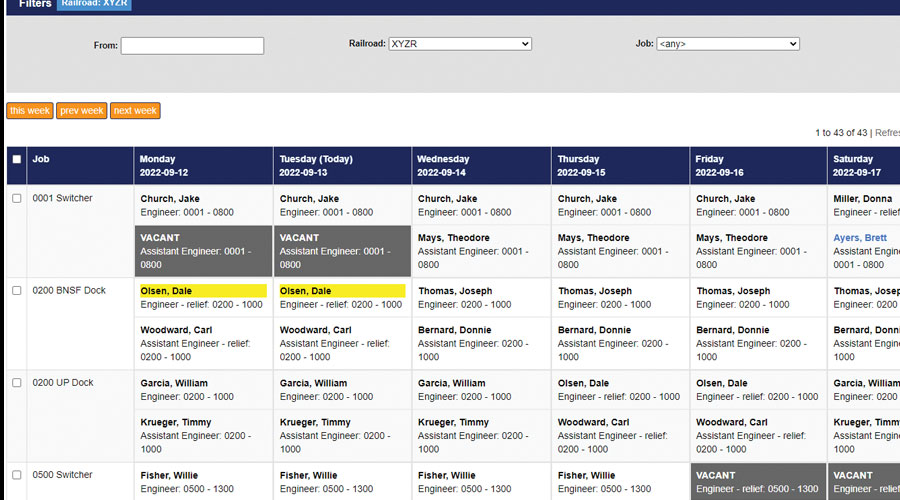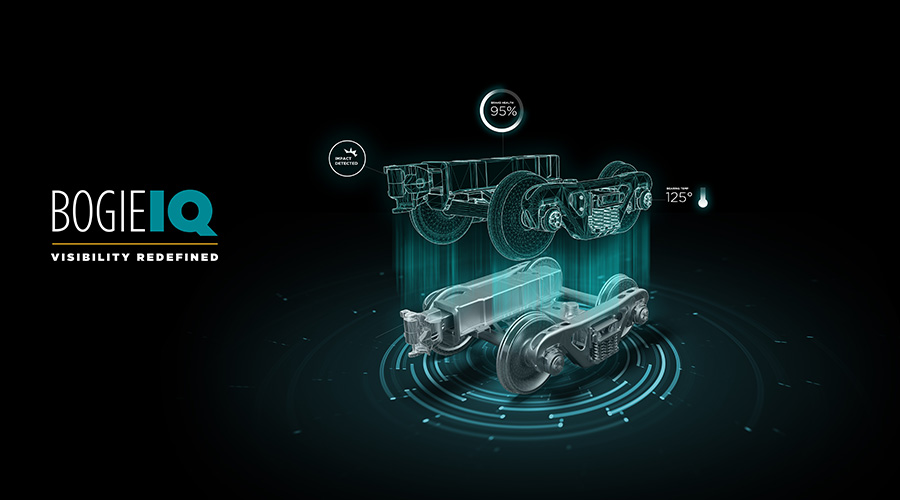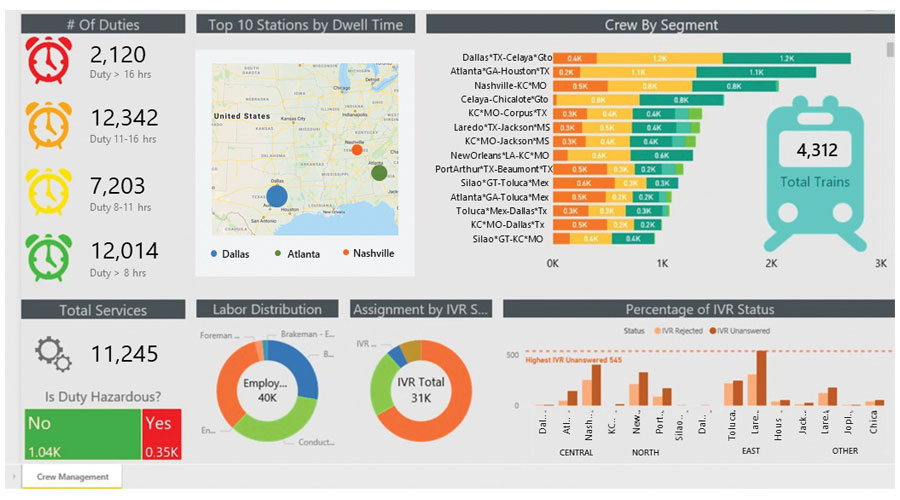Stay updated on news, articles and information for the rail industry
February 2020
Rail News: Internet-Digital
University of Delaware's Big Data conference explored analytics trends in a rail context
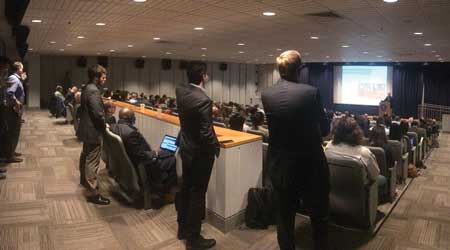
By Jeff Stagl, Managing Editor
When it comes to efficiently processing and analyzing massive amounts of data, traditional techniques no longer cut it for railroads. They need more modern options like Big Data, a process aimed at analyzing and systematically extracting information from data sets that are too large or complex to handle via traditional processing methods.
Through the process, railroads can convert data into usable information that can help them better plan annual maintenance and capital programs. Since Big Data is growing in value as railroads continue to gather and process more information generated from technological advances, the University of Delaware offers a conference each year that focuses on the trending topic — specifically, data analytics and associated statistical analysis techniques.
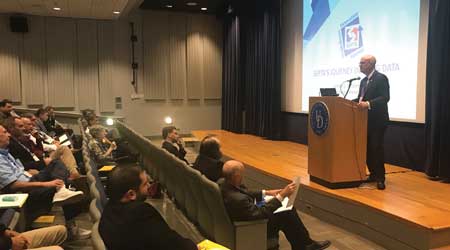
The sixth iteration of the Big Data in Railroad Maintenance Planning Conference was held Dec. 11-12, 2019, at the Trabant University center in Newark, Delaware. The event is organized by the University of Delaware’s railroad engineering and safety program, Big Data center and professional engineering outreach arm.
The 2019 edition aimed to expand on previous years’ conferences by introducing new and emerging analysis techniques, and showing how they can be applied to the large volume of inspection data collected by railroads, says Allan Zarembski, a University of Delaware professor who directs the conference.
The more than 30 presentations were targeted at helping railroads improve their capital and maintenance program planning efforts, including for both track infrastructure and rolling stock.
“We usually have had mostly a track audience, but we’re finding that more and more people want presentations on the mechanical side or operating side,” says Zarembski, who also is the director of the university’s railroad engineering and safety program. “They want to learn about different approaches.”
Speakers hailed from a wide range of rail industry stakeholders, including Amtrak, BNSF Railway Co., CN, CSX, Brazil’s MRS Logistica, the Federal Railroad Administration, Penn State Altoona, State University of New York at Buffalo, Alstom, Railinc, Georgetown Rail Equipment Co., Plasser & Theurer, Strukton Rail, ENSCO Inc. and Uptake Technologies Inc.
Plenty of presentation topics
Presentations addressed managing data and data analytics, combining data streams with different technologies, using machine learning to focus on maintenance needs and employing text mining in data analysis. Machine learning is the scientific study of algorithms and statistical models that computer systems use to perform a specific task using patterns and inference.
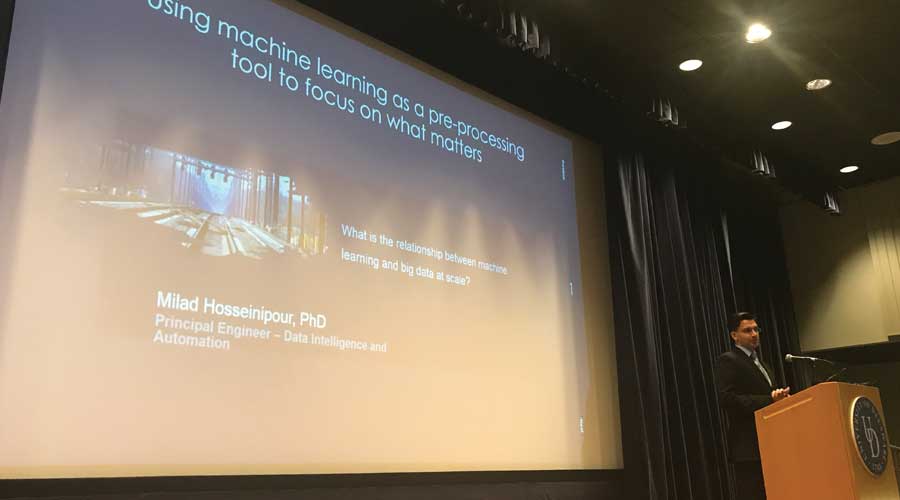
Rutgers University Professor Trefor Williams and Collaborative Solutions LLC Managing Member John Betak discussed the use of topic modeling — or text mining — to identify overriding themes in U.S. and Great Britain rail accidents, says Zarembski.
“They talked about using word recognition technology to analyze rail accidents, to look for words that are often repeated in accident reports,” he says. “There’s more to data analysis than just crunching numbers.”
The sessions helmed by several universities offered more aggressive takes on data analytics, such as pattern recognition techniques, Zarembski says. For example, Milan Afzalan, Farrokh Jazizadeh Karimi and Mehdi Ahmadian from Virginia Polytechnic Institute and State University — or more commonly Virginia Tech — talked about assessing track conditions by using scalable onboard data and machine learning.
SEPTA’s ongoing journey
A major conference highlight was the Dec. 11 keynote address from Southeastern Pennsylvania Transportation Authority (SEPTA) General Manager Jeff Knueppel, says Zarembski. Knueppel — who retired at 2019’s end — described the authority’s journey with Big Data, an effort aimed at forging a more effective organization.
SEPTA is counting on Big Data to help improve safety and the customer experience, optimize spending and workforce planning, spur more informed decisions, and eventually increase the predictability of operations, maintenance and capital programming.
The authority long has tried to replace old manual and formulaic processes with automated ones, says SEPTA Director of Innovation Erik Johanson, who helped with Knueppel’s presentation and reviewed it last month. For example, real-time remote condition monitoring of assets can provide automatic alerts of any unusual conditions.
SEPTA has employed a TekTracking LLC remote monitoring system proof of concept at its 40th Street trolley portal. Such automation is targeted to help authority officials better understand the root causes of problems, recalibrate maintenance intervals and — over time — increase the potential to predict component failures.
SEPTA has nearly reached the automated stage and now is in the preliminary stages of moving toward the predictive stage, which is the “holy grail,” says Johanson.
Breaking down data silos
To be predictive, the authority will need to evaluate and invest in new data sources, promote data-driven decision making and turn data into actionable insights.
“Data now is in silos, so we need to break them down,” Johanson says. “The goal is to have an organizational pool of data that everyone has access to.”
Service quality would improve substantially because arrival times would be more predictable, he says. Plus, maintenance personnel would know when switches or other components would fail.
“You can better understand various aspects of your business,” Johanson says.
For now, as part of the ongoing automation push, SEPTA continues to implement a new fare card system featuring an open payment system that requires no tokens or paper fares. The authority wants to continue leveraging data to modernize and boost efficiency, including the constant search for better ways to gather, store and disseminate all data sources, says Johanson.
For example, SEPTA continues to adopt a second generation of an automated passenger counter (APC) technology that’s more sophisticated than the prior generation. The APC provides time-stamped and geocoded data with limitless analytical potential, and affords opportunities for customer rewards or more dynamic pricing, says Johanson.
SEPTA also employs cellular modems on all buses and most of its rail fleet. A radio-based dispatch system previously polled the location of a rail car or bus every three minutes, but the modems poll every 30 seconds, providing better vehicle locations for customers, says Johanson. Coupled with a new mobile application, the modems also help improve fleet management and scheduling.
“It’s all about going from old to better ways for a predictive platform,” Johanson says.
The future in leveraging data will focus on safety and inspections, such as the use of GPS-enabled drones to inspect infrastructure above ground and GPS-denied drones to inspect tunnels or subways underground using special sensors, he says. In addition, SEPTA is considering or adopting the use of ground-penetrating radar and ultrasonic testing devices for inspections.
All in the toolmaking for CSX
Rail asset inspections and maintenance in a Big Data context also were the crux of a Dec. 11 presentation conducted jointly by CSX and VisioStack Inc. The session was a prime example of leveraging advanced data analytics, says the University of Delaware’s Zarembski.
CSX Manager of Inspection and Records Stephen Love and VisioStack Data Scientist Joshua Doran discussed the Class I’s use of VisioStack’s RaiLinks™ tool for rail inspections and maintenance.
CSX and VisioStack began working together in early 2018 to better align and synch the massive amounts of inspection and maintenance data the railroad was generating from many sources, says Love, who reviewed the presentation last month.
The VisioStack data alignment tool enables CSX to visualize and disseminate data on cell phones, tablets and laptops, he says. Data — including high-resolution images and potential rail defects — is gathered from unmanned and manual test cars, other detection cars, LIDAR devices and visual inspections conducted by field inspectors. The tool is designed to support data organization, searches and sharing on a high scale.
“We can see changes in data over time, see what’s trending or if there’s been a critical exception,” Love says. “It helps with making decisions — we can better plan work windows and how capital dollars are spent.”
CSX began to provide RaiLinks to field managers in second-quarter 2019, and more than 100 of them now use it. The Class I plans to continue developing the tool with VisioStack while gathering feedback from users, says Love.
“It’s customizable, so it can be suited to our needs,” he says.
CSX aims to roll out RaiLinks to field personnel in the second quarter. The tool currently is used for track maintenance, but there will be other applications in the future, says Love.
In 2018, the railroad covered more than 57,000 miles of track with test cars, but in 2019 — after using an unmanned test car and the VisioStack tool for the first time — about 200,000 miles of track were covered.
“Without the tool, that would have been very difficult to do,” Love says.
CSX expects to cover even more track miles in 2020 because the railroad will be using a total of three unmanned test cars, he says.
Such positive results from Big Data are driven by research and development, and the academic world plays a large role in R&D. To that end, the University of Delaware aims to incorporate graduate students’ projects into the conference through poster sessions.
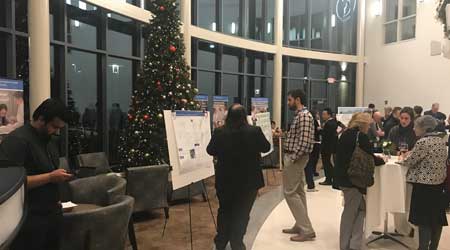
Held in conjunction with an evening reception on Dec. 11, the sessions enabled seven graduate students to display and explain their research.
“Many found the opportunity to talk to the students very enlightening,” Zarembski says, adding that the university might expand the poster sessions at the 2020 conference.
One thing that likely won’t change at the next event: the attendance fee. The conference is free because the university relies on sponsors to cover costs, says Zarembski. The 2019 edition drew six platinum and seven gold sponsors.
“We have heard from people that it’s easier for them to attend if they don’t have to worry about a fee,” says Zarembski.
Email questions or comments to jeff.stagl@tradepress.com.


 2025 MOW Spending Report: Passenger-rail programs
2025 MOW Spending Report: Passenger-rail programs
 Gardner steps down as Amtrak CEO
Gardner steps down as Amtrak CEO
 Guest comment: Oliver Wyman’s David Hunt
Guest comment: Oliver Wyman’s David Hunt
 Women of Influence in Rail eBook
Women of Influence in Rail eBook
 railPrime
railPrime




